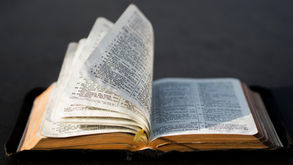26 Useful Resources for the Martyrdom of the Bab Commemoration
- Uplifting Words
- Jun 25, 2020
- 4 min read
Updated: Jul 25, 2021
A collection of articles, writings, music, videos and chants that can be used to create your next Martyrdom of the Bab Baha'i holy day commemoration or devotional program.

A devotional program to be used for the commemoration of the Martyrdom of the Bab Baha'i Holy Day. READ >
Mirza Ali Muhammad was born in Shiraz in 1819 and was executed in Tabriz in 1850, at the age of 31. His title, the Bab, means “the Gate.” Similar to John the Baptist, He foretold of a Mighty Messenger of God that was coming soon. READ MORE >
Whether you are looking for quotes or Baha'i writings, videos, music, prayers or stories to organise your next Commemoration of the Martyrdom of the Bab. Watch >
Melissa L. Charepoo of the Delighted Hearts’ Blog is happy to share a gift coloring activity for the Martyrdom of the Báb which will help children understand the importance of this Holy Day. READ >
By 1850, thousands of people from every walk of life across Persia had become Bábís and the authorities decided that the only way to stop this new religion was to execute the Báb.
And so, it was decreed that on July 9th,1850, the Báb was to be executed by firing squad in Tabríz. Watch >
Shoghi Effendi recounts the moments of the final resting place of the Blessed Bab. READ >
Selections from the Writings of Bahá’u’lláh for the Bahá’í Holy Day of the Martydom of the Bab. READ >
Anyone reading the martyrdoms of both Jesus and the Báb, will notice some very intriguing similarities. READ >
This short collection of extracts gathers together some of the tributes paid to the Báb by Bahá’u’lláh. READ >
The Surih of Counsel (Súriy-i-Nush in Arabic) was revealed in Baghdád in honour of Siyyid Ja'far-i-Yazdí, a distinguished divine and a man highly esteemed by the inhabitants of Yazd. Read >
The Súriy-i Mulúk, or the Tablet of Kings is a tablet written by Baháʼu'lláh that was addressed collectively to the monarchs of the East and the West. The tablet was likely written in early 1868 in Arabic while he was in Adrianople. READ >
A Tablet which in its profundity and wealth of knowledge stands out as one of the most significant among Bahá'u'lláh's Writings is the Lawh-i-Salmán (Tablet of Salmán), revealed in Adrianople in honour of Shaykh Salmán. READ >
Súriy-i-Dhikr, which translates to Súrih of Remembrance, is a Tablet revealed by Bahá’u’lláh in Adrianople. It concerns the Martyrdom of the Báb with a portion of the Tablet being revealed in the voice of the Báb. READ >
Baha'u'llah revealed the Súriy-i-Aḥzán (Súrih of Sorrows in English) in Adrianople in 1868. READ >
This short collection of extracts gathers together some of the tributes paid to the Báb by ‘Abdu’l-Bahá. READ >
In this article, first published in the 1994–5 edition of The Bahá’í World, Douglas Martin considers the Revelation of the Báb in the context of its impact on the Western writers of the period and its subsequent influence. Read More >
Millenial fervor gripped many peoples throughout the world during the first half of the nineteenth century; while Christians expected the return of Christ, a wave of expectation swept through Islam that the "Lord of the Age" would appear. Read More >
A beautiful collection of Baha'i holy writings and prayers by the Bab, herald of the Baha'i Faith, put to music and shared through these videos. Watch Now >
A collection of albums and musicians who have dedicated works to the life and holy writings of the Bab, the Herald of the Baha'i Faith. Listen Now >
The early nineteenth century was a period of messianic expectations in many lands. Deeply disturbed by the implications of scientific inquiry and industrialization, earnest believers from many religious backgrounds turned to the scriptures of their faiths for an understanding of the accelerating processes of change. READ MORE >
Shoghi Effendi beautifully lists the titles and names of the Bab as defined by Baha'u'llah, `Abdu'l-Baha, and Himself. Read >
In this extract from a letter addressed to the Bahá’ís of the West known as The Dispensation of Bahá’u’lláh, Shoghi Effendi explains the station of the Báb. READ >
This brief historical framework will be of assistance in understanding the thrust of the Báb’s teachings. In one sense, His message is abundantly clear. As He repeatedly emphasized, the purpose of His mission and the object of all His endeavors was the proclamation of the imminent advent of Him Whom God will make manifest, that universal Manifestation of God anticipated in religious scriptures throughout the ages of human history. READ MORE >
Apart from the specific laws of the Bayán, the Báb’s writings also contain the seeds of new spiritual perspectives and concepts which were to animate the worldwide Bahá’í enterprise. Beginning from the belief universally accepted by Muslims that God is one and transcendent, the Báb cuts sharply through the welter of conflicting doctrines and mystical speculations that had accumulated over more than 12 centuries of Islamic history. READ MORE >
21 Articles on the life and personage of the Bab as well as stories of His first believers. Read >
6 Quotes from the Baha'i Writings describing the Station of the Bab. Read >


















